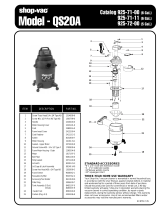
OM-240 113 Page 2
STEAM AND HOT COOLANT can burn.
D If possible, check coolant level when engine is
cold to avoid scalding.
D Always check coolant level at overflow tank, if
present on unit, instead of radiator (unless told
otherwise in maintenance section or engine
manual).
D If the engine is warm, checking is needed, and there is no over-
flow tank, follow the next two statements.
D Wear safety glasses and gloves and put a rag over radiator cap.
D Turn cap slightly and let pressure escape slowly before
completely removing cap.
BATTERY ACID can BURN SKIN and EYES.
D Do not tip battery.
D Replace damaged battery.
D Flush eyes and skin immediately with water.
Using a generator indoors CAN KILL
YOU IN MINUTES.
D Generator exhaust contains carbon monoxide.
This is a poison you cannot see or smell.
D NEVER use inside a home or garage, EVEN IF
doors and windows are open.
D Only use OUTSIDE and far away from windows, doors, and
vents.
ENGINE HEAT can cause fire.
D Do not locate unit on, over, or near combustible
surfaces or flammables.
D Keep exhaust and exhaust pipes way from
flammables.
1-3. Hydraulic Hazards
HYDRAULIC EQUIPMENT can injure
or kill.
D Incorrect installation or operation of this unit
could result in equipment failure and personal
injury. Only qualified persons should install, op-
erate, and service this unit according to its
Owner’s Manual, industry standards, and na-
tional, state, and local codes.
D Do not exceed the rated output or capacity of the hydraulic pump
or any equipment in the hydraulic system. Design hydraulic sys-
tem so failure of any hydraulic component will not put people or
property at risk.
D Before working on hydraulic system, turn off and lockout/tagout
unit, release pressure, and be sure hydraulic pressure cannot be
accidentally applied.
D Do not work on hydraulic system with unit running unless you are
a qualified person and following the manufacturer’s instructions.
D Do not modify or alter hydraulic pump or manufacturer-supplied
equipment. Do not disconnect, disable, or override any safety
equipment in the hydraulic system.
D Use only components/accessories approved by the manufac-
turer.
D Keep away from potential pinch points or crush points created by
equipment connected to the hydraulic system.
D Do not work under or around any equipment that is supported
only by hydraulic pressure. Properly support equipment by
mechanical means.
MOVING PARTS can injure.
D Keep away from moving parts such as fans,
belts and rotors.
D Keep all doors, panels, covers, and guards
closed and securely in place.
D Keep hands, hair, loose clothing, and tools away from moving
parts.
D Before working on hydraulic system, turn off and lockout/tagout
unit, release pressure, and be sure hydraulic pressure cannot be
accidentally applied.
D Have only qualified people remove guards or covers for maint-
enance and troubleshooting as necessary.
D Reinstall doors, panels, covers, or guards when servicing is
finished and before starting engine.
HYDRAULIC FLUID can injure or kill.
D Before working on hydraulic system, turn off and
lockout/tagout unit, release pressure, and be sure
hydraulic pressure cannot be accidentally applied.
D Relieve pressure before disconnecting or con-
necting hydraulic lines.
D Check hydraulic system components and all con-
nections and hoses for damage, leaks, and wear
before operating unit.
D Wear protective equipment such as safety
glasses, leather gloves, heavy shirt and trousers,
high shoes, and a cap when working on hydraulic
system.
D Use a piece of paper or cardboard to search for leaks−−never use
bare hands. Do not use equipment if leaks are found.
D HYDRAULIC FLUID is FLAMMABLE−−do not work on hydraulics
near sparks or flames; do not smoke near hydraulic fluid.
D Reinstall doors, panels, covers, or guards when servicing is
finished and before starting unit.
D If ANY fluid is injected into the skin, it must be surgically removed
within a few hours by a doctor familiar with this type of injury or gan-
grene may result.
HOT PARTS AND FLUID can burn.
D Do not touch hot parts bare handed or allow hot
fluid to contact skin.
D Allow cooling period before working on equip-
ment.
D To handle hot parts, use proper tools and/or wear heavy, insu-
lated welding gloves and clothing to prevent burns.
READ INSTRUCTIONS.
D Read and follow all labels and the Owner’s Manu-
al carefully before installing, operating, or servic-
ing unit. Read the safety information at the begin-
ning of the manual and in each section.
D Use only genuine replacement parts from the manufacturer.
D Perform maintenance and service according to the Owner’s
Manuals, industry standards, and national, state, and local
codes.





















